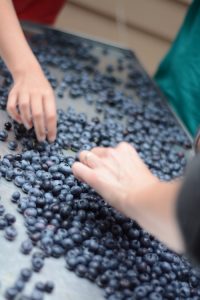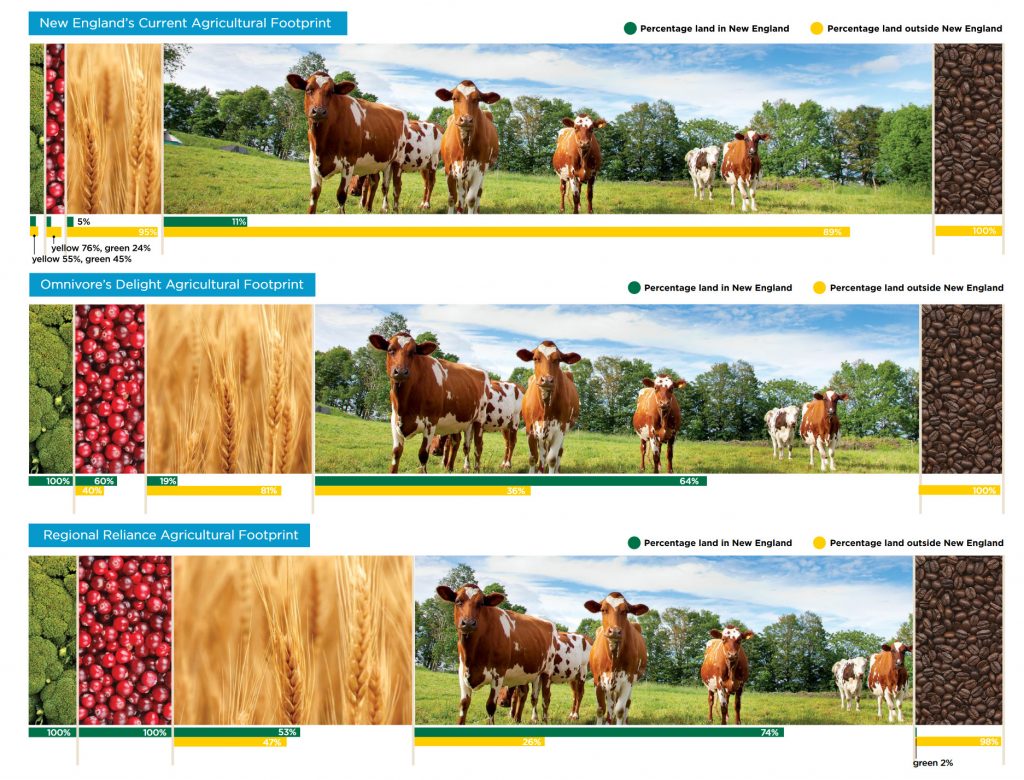F rom September 15 to 21, my household will pilot the Omnivore’s Delight Challenge, a “diet” proposed by Food Solutions New England. We will search for local food, resources and opportunities, all the while keeping track of the flavors, calories, $$, obstacles and scarcities. Please comment, offer advice, and if you know, please tell me where to find locally gown flour.
rom September 15 to 21, my household will pilot the Omnivore’s Delight Challenge, a “diet” proposed by Food Solutions New England. We will search for local food, resources and opportunities, all the while keeping track of the flavors, calories, $$, obstacles and scarcities. Please comment, offer advice, and if you know, please tell me where to find locally gown flour.
(To read the other posts in this blog, click here.)
 Before I launch into our first locavoracious adventures, I thought I’d better introduce how we usually eat when we’re not on a “diet”. Like most of the NERTs who are piloting the Omnivore’s Delight, we are self-selected, highly motivated, and already somewhat locavores.
Before I launch into our first locavoracious adventures, I thought I’d better introduce how we usually eat when we’re not on a “diet”. Like most of the NERTs who are piloting the Omnivore’s Delight, we are self-selected, highly motivated, and already somewhat locavores.
Our household is now in its fourth year of a year-round CSA share Siena Farms in Sudbury, the next town over (7.2 miles), and we are signed up for three more years. We have our own garden, admittedly much diminished by this season’s drought, but prolific in the fat years. Next year I plan to give my veggies more sun in a bed in the Transition Wayland Community Garden Plot. I’ve kept bees for six years now, and some of my hives sit right in my front yard. From those I rob hyperlocal sweetener, which is also the base for syrups, jams, and mead (honey wine).
 I frequent the fantastic Wayland Farmers Market, in summer and in winter. We get all our eggs from a chicken yard nearby (1 mile). I put up a lot of food for winter by canning and freezing. We drink mostly (filtered) local water (a.k.a. tap water), and whole milk – until now, not local. We treat ourselves to coffee, the occasional wine and the even more occasional fruity soda or root beer – none of which are local.
I frequent the fantastic Wayland Farmers Market, in summer and in winter. We get all our eggs from a chicken yard nearby (1 mile). I put up a lot of food for winter by canning and freezing. We drink mostly (filtered) local water (a.k.a. tap water), and whole milk – until now, not local. We treat ourselves to coffee, the occasional wine and the even more occasional fruity soda or root beer – none of which are local.
When we shop for food we are mindful of the ingredients: we like whole foods, whole milk, whole grain, and have absolutely no tolerance for GMOs, high fructose corn syrup, Red 40 and the like (did you know they even put that stuff in children’s toothpaste?). We aren’t beholden to organic: if I can talk to the farmer, visit the farm, and like what I see, that certification doesn’t matter to me.
 As for our food cultures, we eat mostly European/American fare. The Kid’s a picky eater, with veggies suffering the most abuse, but so far she’s into it (she is our recipe scout, photographer, and proofreader of this here blog). The Husband is the least picky, and I’m somewhat in between. When my parents-in-law come from India for the warmer half of the year, our food culture shifts further East. The reason I mention this is that the sumptuous Indian cuisine relies, straightforwardly enough, on many staples that can’t grow in New England: rice, hot-weather lentils and spices like ginger and turmeric. Needless to say, for them this Diet requires a bit more of an adaptation. They’re game, though, and will join in the Omnivore’s Delight as of Sunday, which is when we’ll celebrate The Husband’s birthday. I already have something special planned… can’t give it away yet.
As for our food cultures, we eat mostly European/American fare. The Kid’s a picky eater, with veggies suffering the most abuse, but so far she’s into it (she is our recipe scout, photographer, and proofreader of this here blog). The Husband is the least picky, and I’m somewhat in between. When my parents-in-law come from India for the warmer half of the year, our food culture shifts further East. The reason I mention this is that the sumptuous Indian cuisine relies, straightforwardly enough, on many staples that can’t grow in New England: rice, hot-weather lentils and spices like ginger and turmeric. Needless to say, for them this Diet requires a bit more of an adaptation. They’re game, though, and will join in the Omnivore’s Delight as of Sunday, which is when we’ll celebrate The Husband’s birthday. I already have something special planned… can’t give it away yet.
Usually we eat less meat, perhaps more fish, than the average American household. The Food Vision outlines our current agricultural footprint, a well-balanced and achievable Omnivore’s Delight footprint, and an aggressive but possible Regional Reliance footprint. In many ways, what we eat is already closer to the Regional Reliance diet. Our main challenge then will be the local/regional provenance of the food.

 We we already locavores where veggies are concerned. On rare occasions I will grudgingly buy a mealy, tasteless tomato out of season, and that first local tomato (or asparagus, or pepper, or cucumber, or ear of corn…) is an occasion for a feast, and hence we feast a lot! But until now I’ve not been diligent about local milk, flour, meat or fish. I think that, as the week progresses, we’ll find that the biggest adjustment. I am eager to see its implications: will the food be hard to find, difficult to get, too expensive (or surprisingly cheap), and versatile enough to make for a ton of satisfying meals?
We we already locavores where veggies are concerned. On rare occasions I will grudgingly buy a mealy, tasteless tomato out of season, and that first local tomato (or asparagus, or pepper, or cucumber, or ear of corn…) is an occasion for a feast, and hence we feast a lot! But until now I’ve not been diligent about local milk, flour, meat or fish. I think that, as the week progresses, we’ll find that the biggest adjustment. I am eager to see its implications: will the food be hard to find, difficult to get, too expensive (or surprisingly cheap), and versatile enough to make for a ton of satisfying meals?
The Food Vision is to grow 50% of our food here in New England by 2060. For this challenge, we’ll strive to do better, but there is a lot of leeway for non-regional ingredients. Thank goodness, because we do like pepper in our dishes, and olive oil, etc. The idea, then, is not to cook sub-par meals, let alone go hungry because we can’t find local. The idea is to do our best, have fun, learn a lot, and eat well!
A quick word about “local” (within a 100 driving miles) and “regional” (beyond 100 miles, within New England): these distances are entirely arbitrary, though as time goes by and as we get closer to 2060, it might get less so. It depends on how the future unfurls: if our future selves and descendants will be using electric vehicles (powered by clean electricity, of course), then the range of those vehicles may be your limit. If on the other hand it will be ox carts, we may want to shrink our ranges by a hair or two 😉
Stay tuned!
